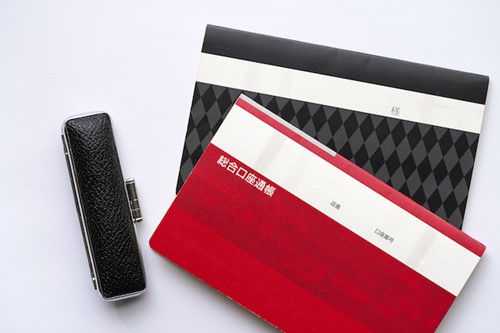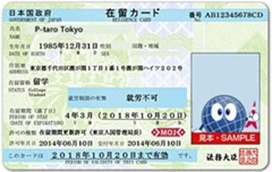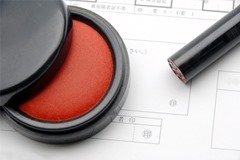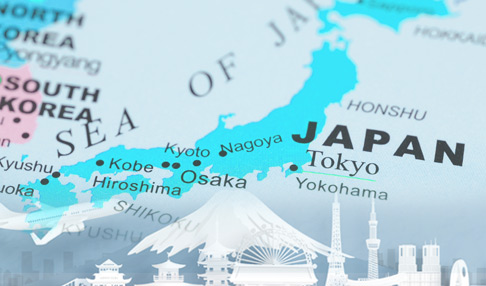Opening a Bank Account in Japan for Foreigners

Opening a bank account in Japan is a relatively easy process, but like all things here you will need to have patience and be armed with all of the required documents before you walk into your closest bank branch.
Most Japanese banks are open from 9:00-15:00, Monday to Friday, except for national holidays and New Year’s. They offer a full range of account options including savings, current, and foreign currency accounts.
Japan's most common types of bank accounts:
- General deposit account (Futsu yokin)
- General savings (Tsujo chokin): this is a post office account and generates a slightly higher rate of interest than a general deposit account.
- Time deposit account (Teiki yokin): usually have higher rates of interest but may require notice for withdrawals.
- Current account (Toza yokin): usually provide the option of using checks, but are mostly for businesses.
- Foreign-denominated currency deposits, foreign-currency term deposits (Gaika yokin, Gaika teiki yokin)
The most widely used accounts are general savings and general deposit accounts.
English Speaking (Bilingual) Banks in Japan

At these banks below, you can open an account in English.
PRESTIA (SMBC Trust Bank Ltd.)
At PRESTIA (SMBC Trust Bank Ltd.) you don't need a personal seal (inkan/hanko) to open an account (your signature is effective) and telephone / online banking come as standard in English. Although they offer services in English, there is a chance that there is no English speaking stuff at your nearest branch, therefore we advice you to contact them in advance.
Sony Bank
At Sony Bank you can open an account via the app in English. Simply follow their easy steps, there's no difficult paperwork required. You can find how to open an account and necessary documents here.
Rakuten Bank![]()
At Rakuten Bank you can apply to open an account in English via your PC or smartphone.
SEVEN BANK![]()
SEVEN BANK offers 3 types of accounts, simply follow the instructions in English.
Shinsei Bank
At Shinsei Bank telephone / online banking are available in English.
Japan Post Bank
Opening an account at Japan Post Bank is also an option. This can be done at most Post Offices across Japan. You may find a branch with an English speaker who can assist you however, most postal workers will probably be speaking primarily Japanese. It is advisable to bring a Japanese friend or colleague to assist you.
Opening a Bank Account in Japan: The Basics

What you will need to open an account
Before walking into your closest bank branch to open a bank account in Japan, it’s important to have all of the required documents at hand.
Here is a list of documents which will be required in most instances when opening a bank account in Japan:
- Passport with valid visa: if you are only in Japan on a 90 day visitor visa then you won’t be able to open a bank account.
- Gaijin Card, which is officially called a “Residence Card” (Zairyu Kado).
-

- Tax identification number if issued in your country.
- A recent utility bill stating your current address: This is commonly required however Shinsei bank will not require a utility bill if you apply for a bank account at one of their branch offices.
- Personal Seal (inkan/hanko): most Japanese require a hanko to open an account and the domestic banks will require this also. You may get away with just a signature at a foreign bank, but it’s advisable to get a hanko as it’s used a lot for official documentation in Japan. Hanko used for banking are sold at special stores and are hand carved, making them individually identifiable. When “signing” documents with your hanko, make sure that the seal is not smudged or damaged. Hanko are typically cylindrical and round at the base, but most have a groove on the outside that tells you where the top is supposed to be as you stamp. It will save you the embarrassment of signing your name upside-down!
-

Things you might need
- Marriage certificate - if your partner has a different last name
- Meishi (Name card) - to prove where you work
- Jyuminhyo (Certificate of residence) - its best if you have your "my number" number at the bottom of the certificate. You may request this at the ward office.
Procedure
Now we will go over how to open a bank account in Japan. Once you have all of your documents ready and have decided on which bank to go with, it’s just a matter of walking into your closest most convenient branch. You can open an account over the phone, via the Internet, or by submitting an application by post. Going into a branch in person will be the easiest option.
You will have to complete an application form and in most cases make an initial deposit. This can be as little as ¥1,000. Most banks do not require a minimum balance, but they may charge a monthly fee if the account balance isn’t above a certain figure.
After the account is established, you can apply for a debit card (kyasshu kado) and PIN number (ansho bango). The debit card will be sent to your home address in approximately a week afterwards.
You will be given a bank book which will include your account name written in katakana or rōmaji (i.e., English), the 3-digit sort code of your local branch (misebangō) and your 7-digit account number (kōzabangō).
The ATMs in Japanese banks and post offices usually have an English menu and instructions. From ATMs you can withdraw, deposit, update your passbook, check your balance, and make transfers to another account. If you use your debit card at the ATM of another bank, you may be charged a service fee, so it’s advised to always try using your own bank’s ATM for withdrawals.
You can make arrangements to pay most of your bills directly from your bank account, which is the most common method of bill payment in Japan and saves the hassle of going into a branch or a shop.
Opening a bank account in Japan is actually not so difficult. Things can be very straightforward if you come prepared with all of the required documents and have researched which bank is going to be best for you. As has been mentioned several times, if you are not confident to enter a branch on your own then it’s always a good idea to take a native Japanese speaker with you. Once you understand how to open a bank account in Japan, there’s nothing you can’t do here!
Sending Money Abroad or Receiving Money from Abroad
Wise (formally known as Transfer Wise) would be the best option at this moment for major currencies if you would need only send money abroad or receive money from abroad.








